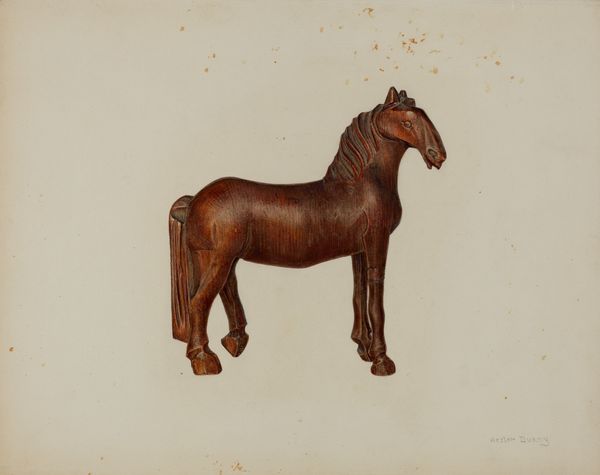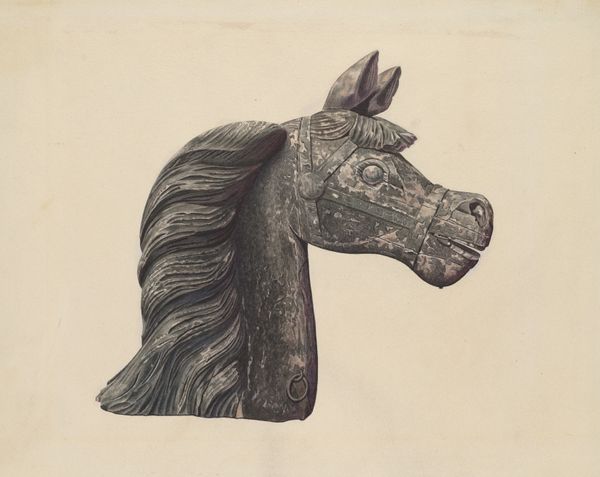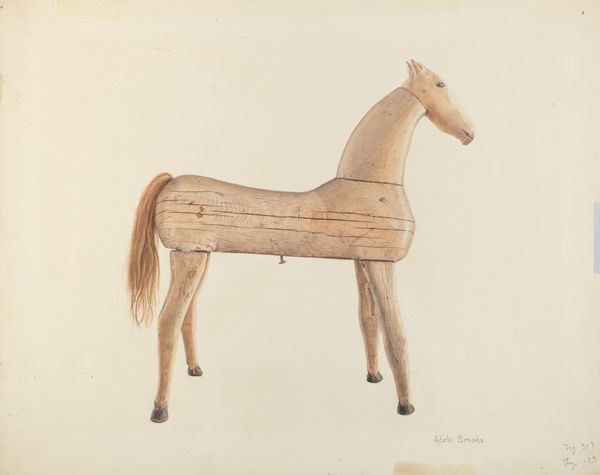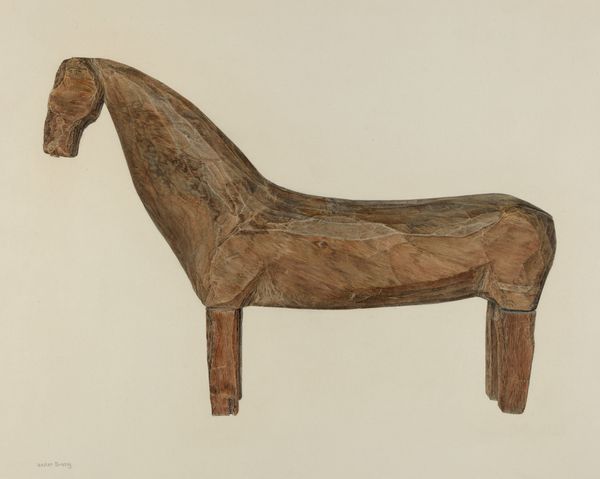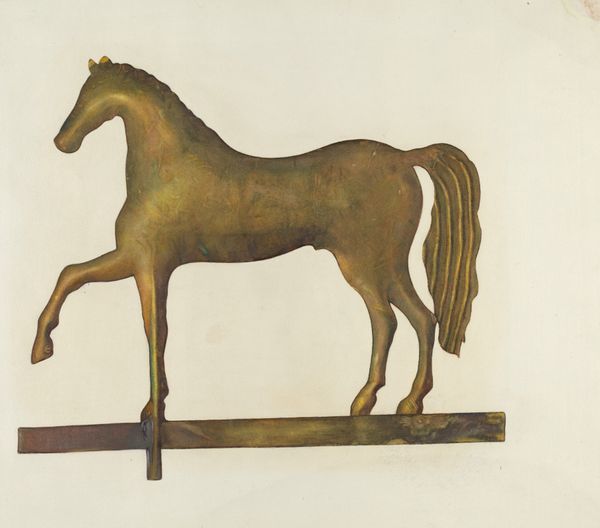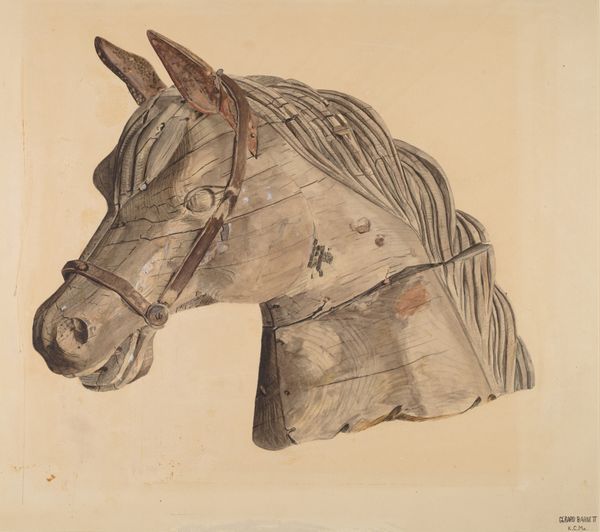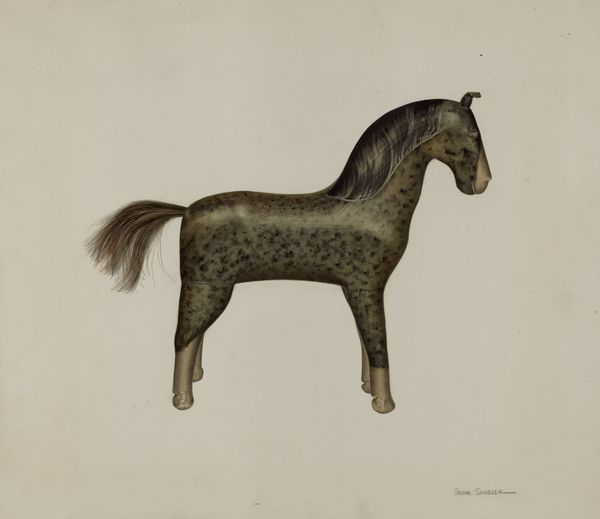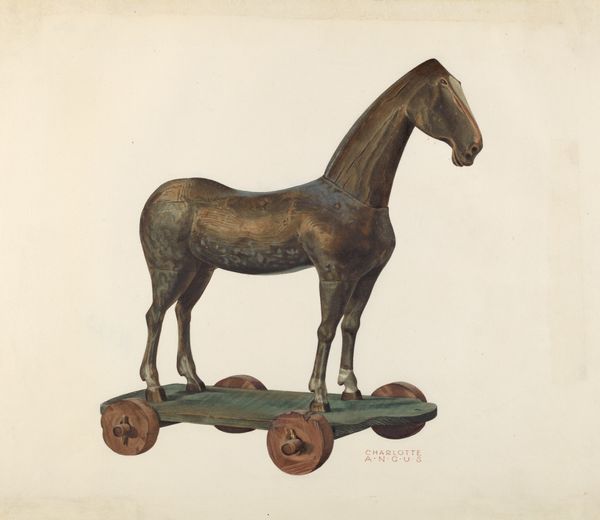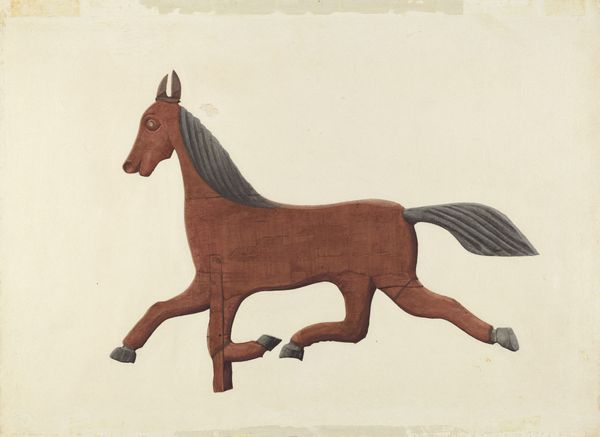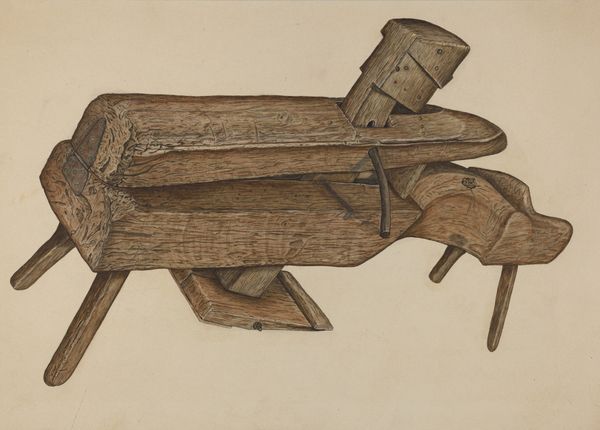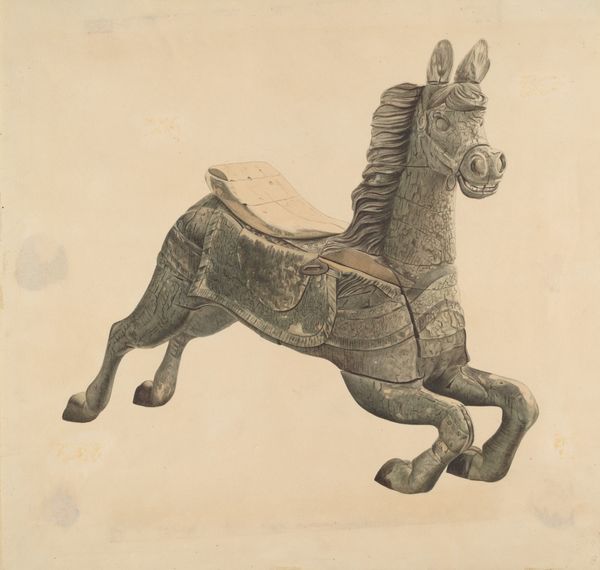
drawing, pencil, wood
#
pencil drawn
#
drawing
#
figuration
#
pencil drawing
#
pencil
#
wood
#
graphite
#
realism
Dimensions: overall: 40.8 x 53.4 cm (16 1/16 x 21 in.) Original IAD Object: 10" long; 4 1/2" wide
Copyright: National Gallery of Art: CC0 1.0
Editor: Here we have "Horse," created between 1935 and 1942 by Einar Heiberg, rendered in pencil and graphite on wood. I'm immediately struck by the tension between the realistic rendering and the subject matter – a simple, almost childlike toy. What’s your interpretation? Curator: I see a fascinating exploration of materiality. The choice to depict a wooden object – likely a mass-produced toy, albeit handmade or hand-finished – using graphite on paper pushes us to consider the labor involved. What’s valued as art and what’s dismissed as craft? Editor: That's a good point about challenging established art categories. I guess I was reading too much into the depiction of a child's toy itself, but your focus on the method makes sense. Curator: Exactly. The meticulous graphite work elevates a commonplace object. Consider the social context: the period between the '30s and '40s, potentially a time of economic hardship, yet still a moment when toymaking continued. Is Heiberg perhaps drawing attention to that dynamic? The consumer and manufacturer... Editor: So you are suggesting the production of these toys continued regardless and, now, graphite brings the act of making the toys under consideration, along with art making itself? Curator: Precisely! By depicting it with such detail in graphite on paper, the drawing mediates the object through fine art. It prompts us to consider how value is assigned. It is not so much about the toy but a comment on artistic production using humble means. What is being produced and the implications. Editor: I see, now – so the graphite and paper, their own "humbleness," reflect and emphasize the simplicity, the commonality, of the wooden toy. I would not have considered that alone. Curator: I'm glad we could delve into this artwork's cultural and economic dimensions. I'm leaving with a new consideration for "making," too!
Comments
No comments
Be the first to comment and join the conversation on the ultimate creative platform.

